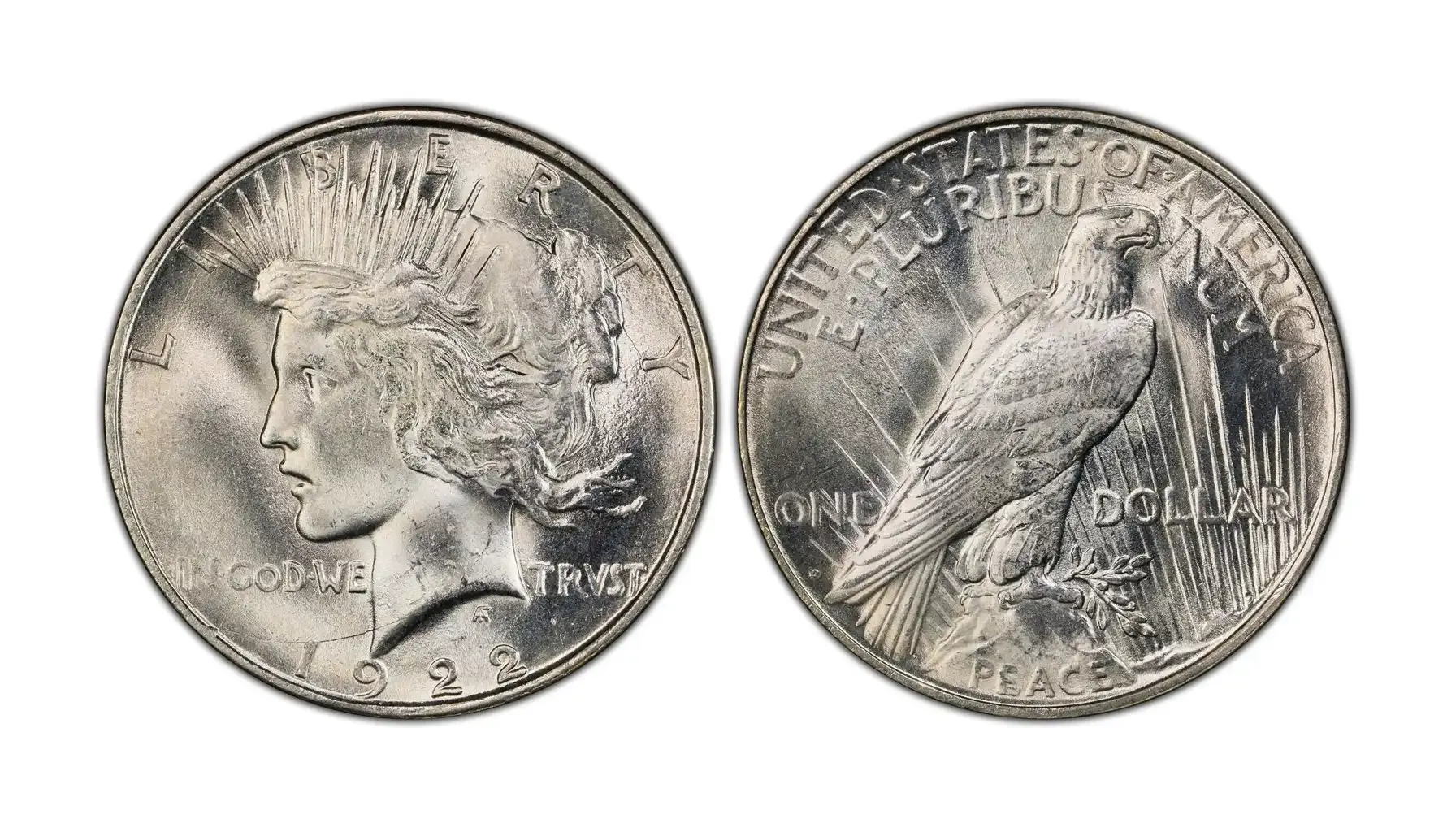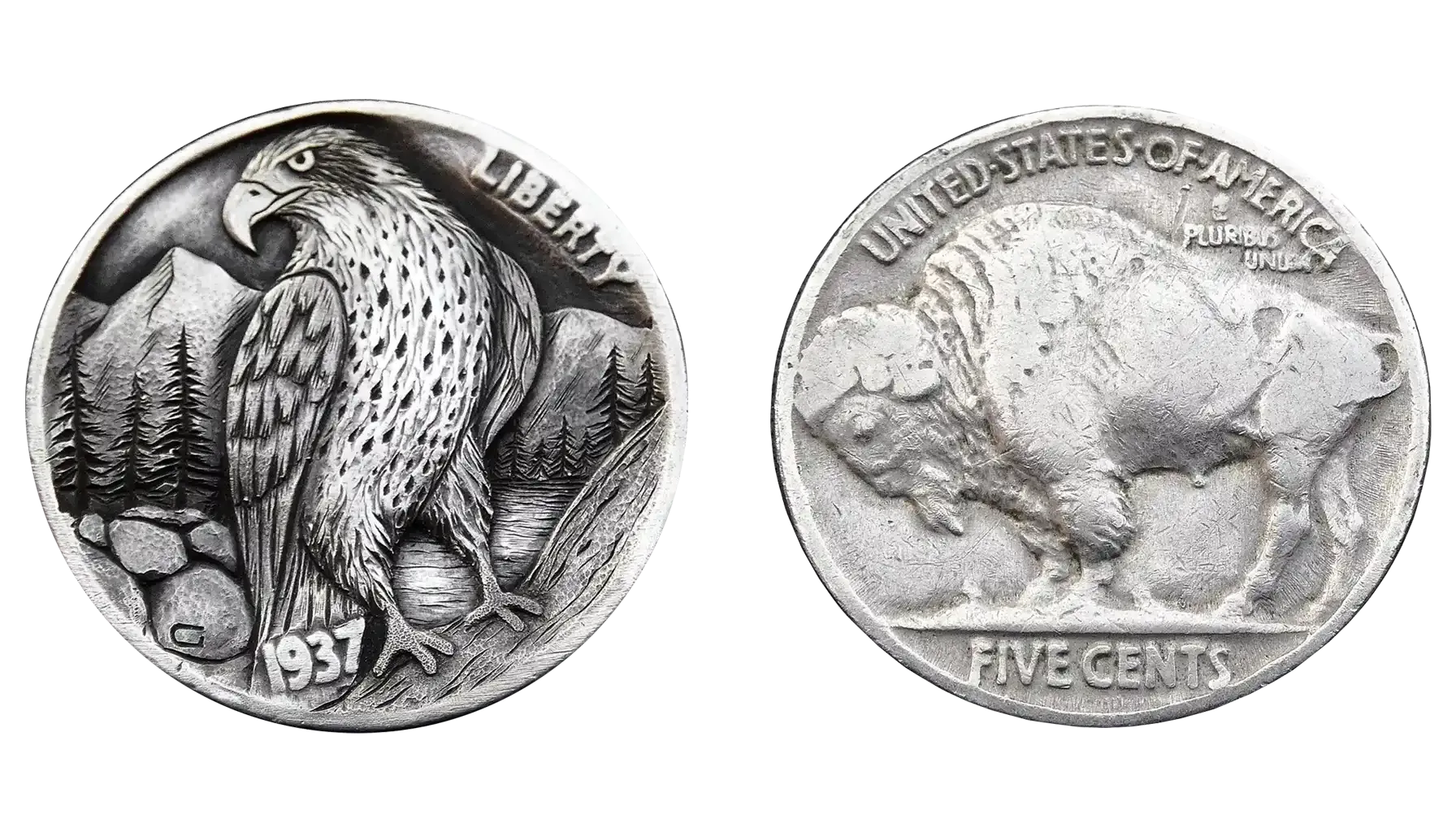Contents:
Coins appear in different sizes, colors, and forms, but some of them may seem a bit too trite and platitudinous. Even apparently ordinary coins, e.g., the 1987 US quarter, have the potential to be worthy for coin collectors and the like. Yes, there were produced millions of these quarters, but some can be different due to specific characteristics, i.e., condition, mint mark, uncommon errors, and designations.
Is a 1987 quarter worth anything? What about the best way to check coin value in this case? Which factors influence the price of 1987 quarters, and why might these be so special? Let us briefly go over everything a collector should know about the 1987 25C and check if this option is appropriate for your collection or not.
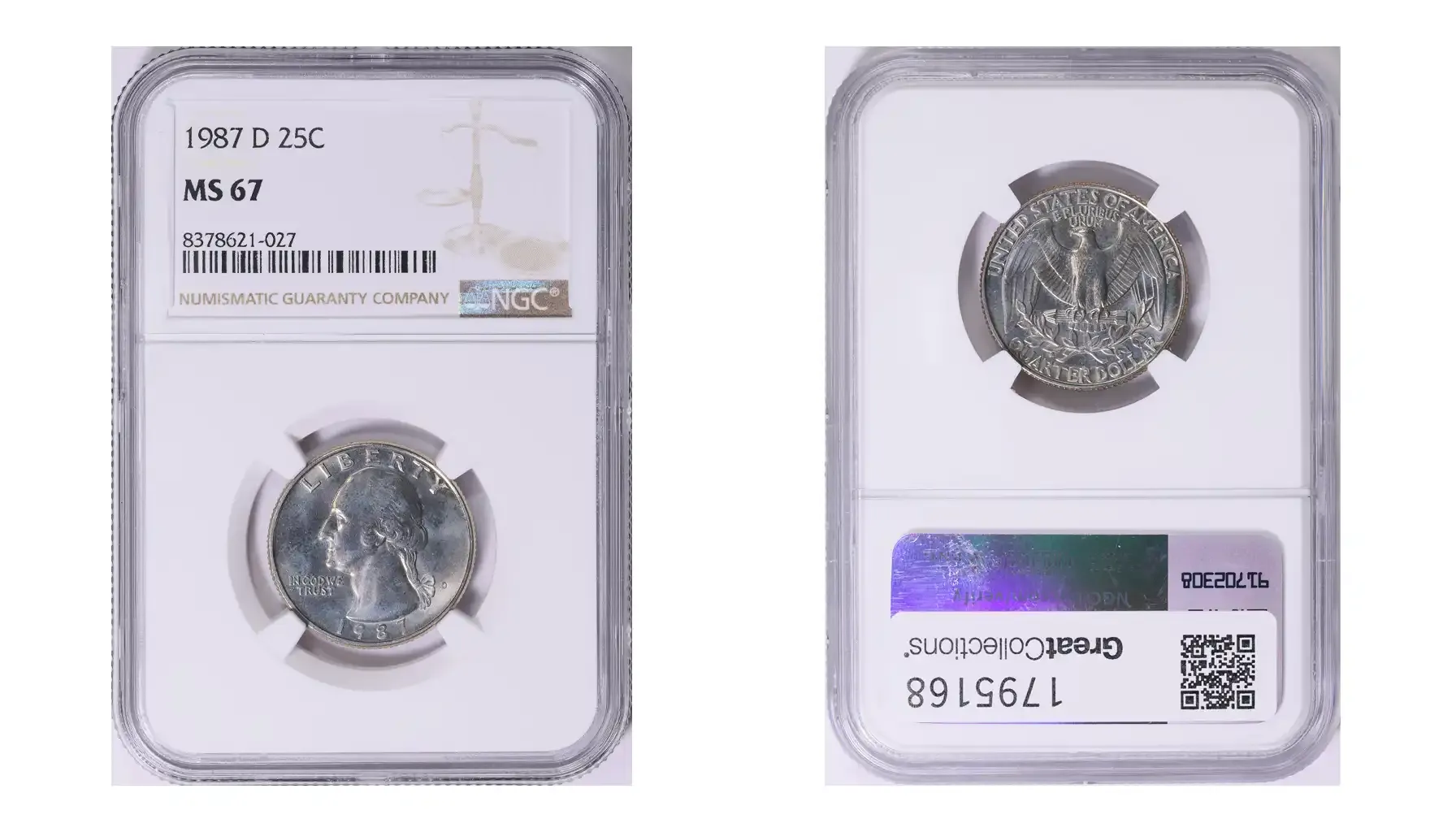
Quick Overview of the 1987 Quarter
Once, in 1932, the US Mint released a coin that served (and still serves) as a decent 25-cent indicator to pay special tribute to George Washington, but there appeared new iterations of already-existing units of currency from time to time.
The version of 1987, though, was almost the same. It still featured the well-known bust of Washington on the obverse and an eagle on its reverse side. These quarters, distinguished by their unique mint marks and struck in a copper-nickel clad composition, were made at three major facilities, i.e., the Philadelphia Mint (P), Denver Mint (D), and San Francisco Mint (S) as well.
The Main Characteristics of the Quarter 1987 | |
Obverse Design | Bust of George Washington |
Reverse Design | An eagle with outstretched wings |
Composition | 75% copper, 25% nickel over a pure copper center |
Diameter | 24.30 mm |
Weight | 5.67 grams |
Mint Marks | “P” for Philadelphia, “D” for Denver, and “S” for San Francisco |
Edge | Reeded |
Although the general perception of these issues prompted collectors to think that they are not as worthy as other instances at all, enthusiasts manage to find some details fascinating. When assessed by reliable grading services like NGC, high-grade instances in nearly perfect condition (referred to as "mint state" quarters) can command prices that are much higher than we can expect. Besides, flaws and errors matter; it is a fact to be discovered further.
How Much is a 1987 Quarter Worth? General Ranges
The value of 1987 quarters represents a stable system mostly determined by the condition of each instance. Nevertheless, one should remember that these were produced in great volumes; hence, they cannot be generally considered rare or overly unique. Let us take a quick look at the following diagram representing the minimal average values of different types of the 1987 25C coins.

Explanation: Apart from the casual quarters that cost as much as their face values indicate, those options in the "about uncirculated" state (AU50-AU58) can fetch a little premium of between $0.30 and $0.50, mostly for collectors who want to finish a set without concentrating on quality specimens.
On the other hand, values significantly rise for coins in mint-state condition and further, particularly those in grades MS67 and higher. Due to their scarcity in such a perfect form, top-graded instances may sell for $50 or more, while those in grades MS65–MS66 might bring between $15 to $20.
Auction Records by Mint
1987 P Quarter

Produced by: Philadelphia Mint
Mintage Figures: 582,499,481
Auction Record: $690 for MS67 (05-25-2018, eBay)
The 1987 Philadelphia Quarter, though produced in high quantities, can still fetch significant prices in high-grade condition. The MS67 example demonstrates the demand for well-preserved coins from this era.
1987 D Quarter

Produced by: Denver Mint
Mintage Figures: 655,594,696
Auction Record: $676 for MS67 (01-11-2015, Heritage Auctions)
The 1987-D Quarter, with its large mintage, continues to attract attention from collectors, especially in high-grade conditions. The MS67 example underscores the premium for these well-preserved coins from the late 20th century.
1987 S Quarter (Proof)
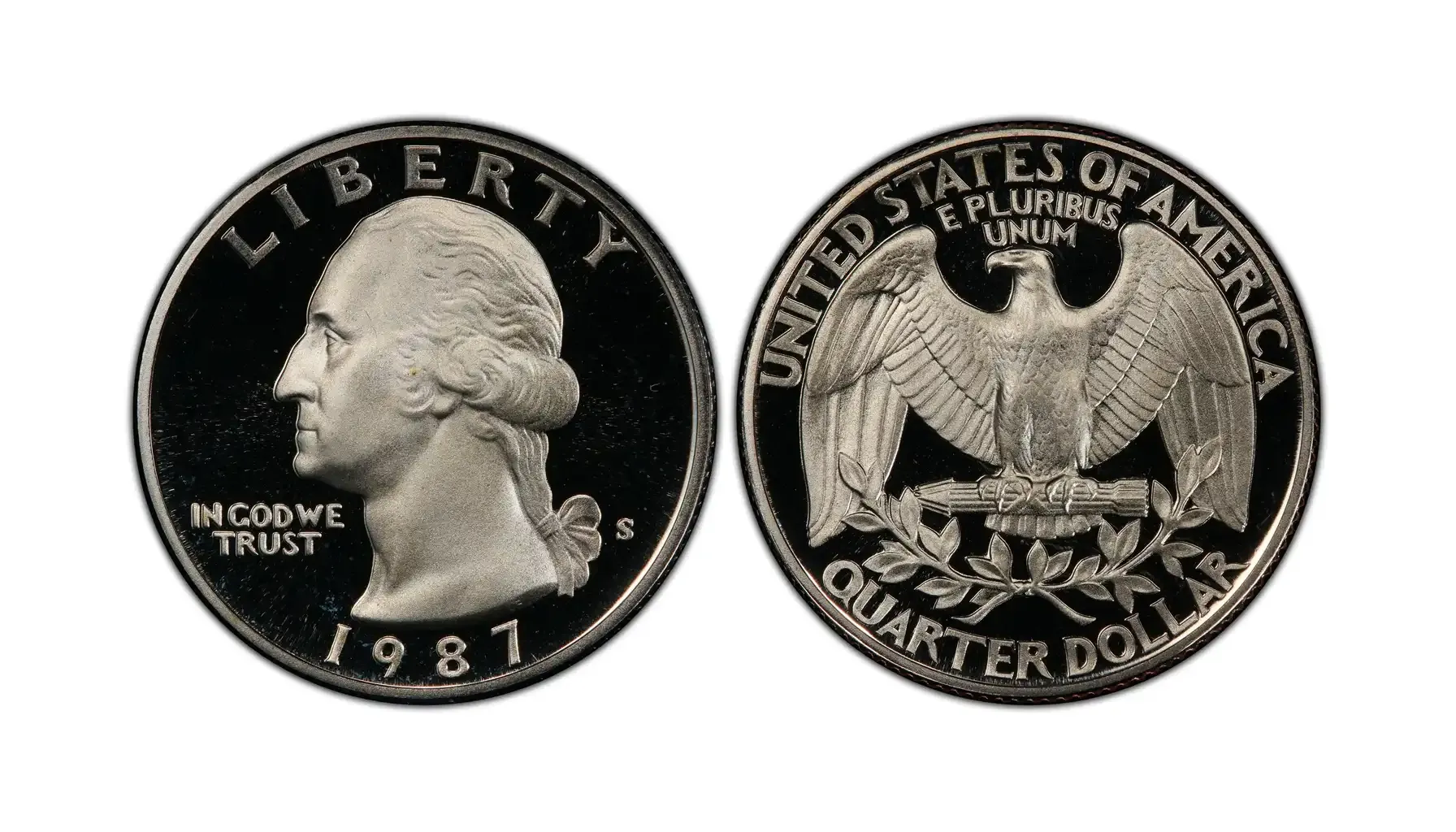
Produced by: San Francisco Mint
Mintage Figures: 4,227,728
Auction Record: $236 for PR70 (11-25-2003, Heritage Auctions)
The 1987-S Proof Quarter, struck at the San Francisco Mint, is a limited mintage coin highly sought after in perfect condition. The PR70 example highlights the high value collectors place on flawless proof specimens.
Note: Auction records may not always reflect the true 1987 quarter worth. The final price achieved at auction can be influenced by various factors, including bidding competition, the reputation of the auction house, and the specific demand for a coin at the time of the sale.
Factors That May Affect the Value
Condition and Grade
The condition of a coin, should it be a 1987 or 1968 1 cent coin, as stated before, has a major impact on its value, just like it does for the majority of precious items on the market. The worth of coins in a flawless, uncirculated state (MS65 and above) is generally far higher than that of worn or circulated coins.
Unique 1987 Quarter Errors
Unique varieties, such as off-center strikes or doubled dies, or coins with general, non-categorized flaws, may sell for higher prices indeed. Collectors who focus on such unusual options find them particularly appealing and valuable, not to mention.
Designations
Designations like CAM (Cameo) and DCAM (Deep Cameo) are used to describe the quality of the coin's proof finish. A CAM designation indicates that the coin has a frosted appearance on the design elements, with a contrasting mirror-like background, while a DCAM designation refers to a deeper contrast, often making the coin's design even more visually striking. This is also a definitive factor that should not be neglected.
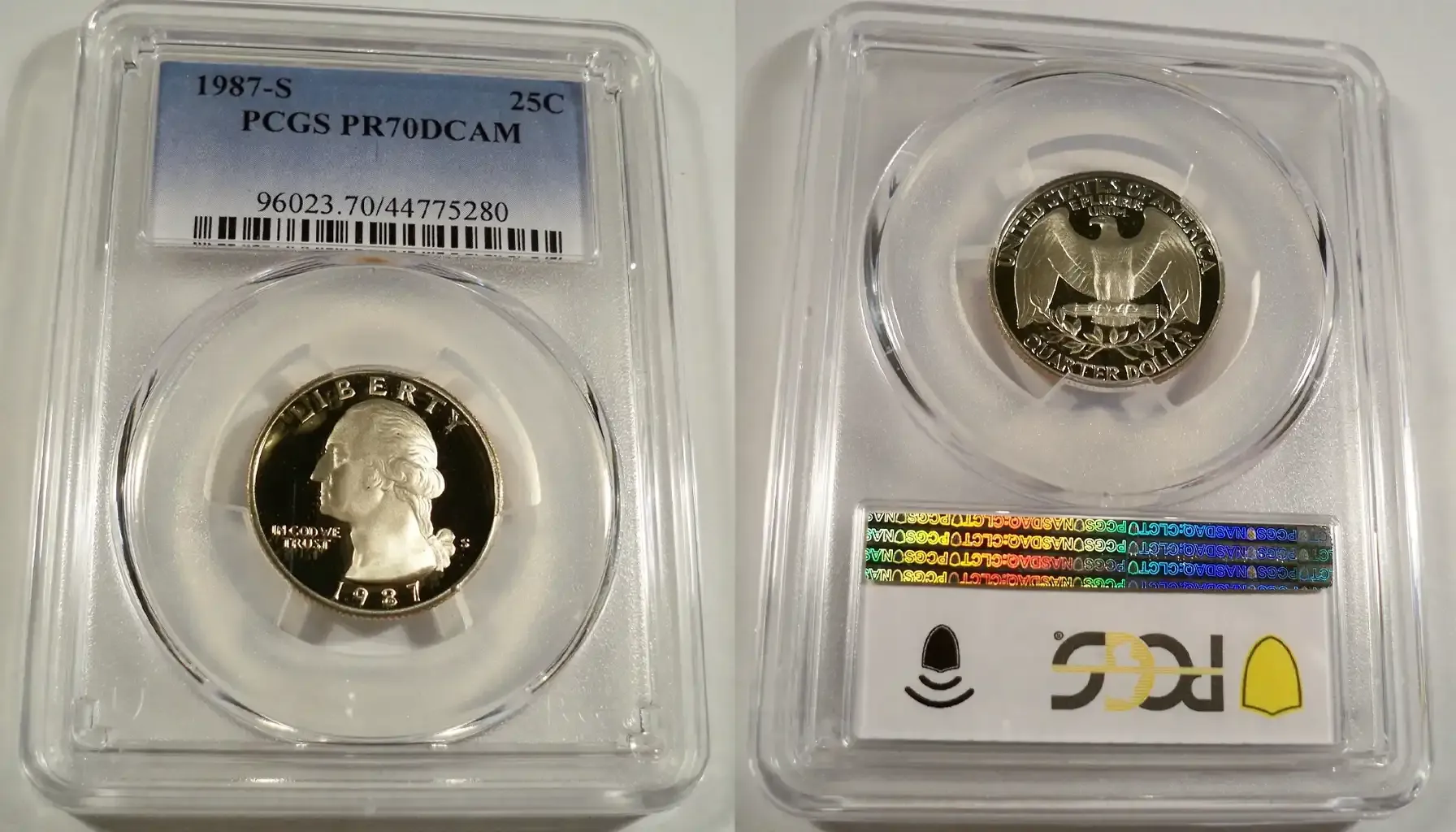
Market Demand
Besides, the value might be influenced by the overall level of interest in Washington Quarters and US currency in general. When demand is high, which can be driven by common collecting trends or the appeal of a particular series, values typically increase. This is not always predictable, though.
By the way, to identify if your coin is valuable or not, one may refer to any coin-collecting app. On behalf of a group of numismatists, we would like to recommend that you try Coin ID Scanner, an innovative application in the sphere of coin analysis. All you need to do is take a high-quality photo of your coin and let the app thoroughly analyze the content. As soon as the app is ready to present data, follow the prompts and enjoy the most comprehensive details about your collection!
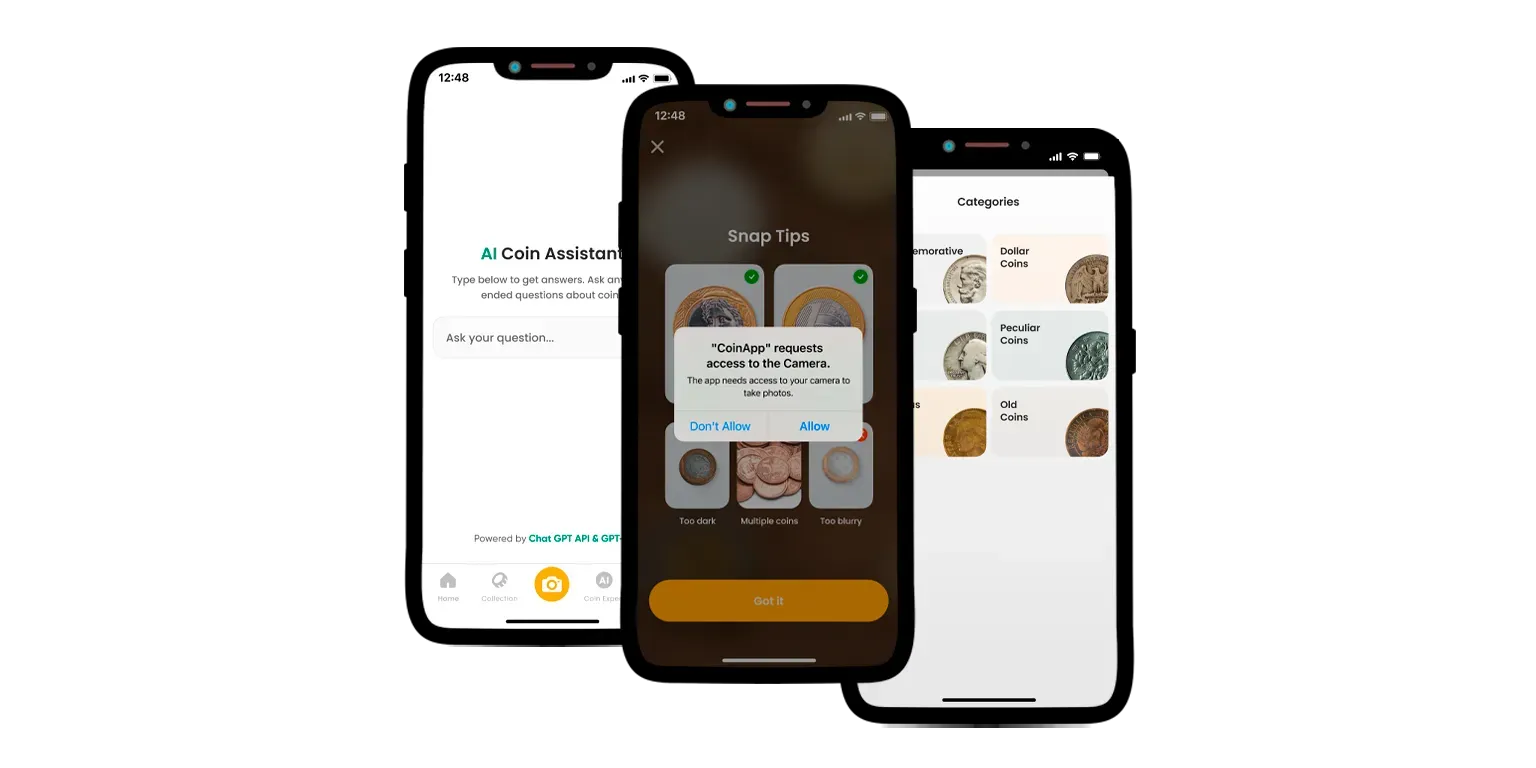
Frequently Asked Questions
What are the most valuable versions of the 1987 quarter?
Quarters from 1987 that are in perfect mint condition or those that have noticeable flaws, including off-center strikes or doubled dies, are considered the most valuable options in the group. The worth of mistake coins or top-grade coins (MS67 and up) can sometimes surpass $1000! Remember about it.
How can I tell if my 1987 quarter has an error?
Close examination generally makes errors such as off-center strikes or doubled dies apparent. An off-center strike usually looks noticeably displaced, while a doubled die may display multiple details at the same time. For verification, it is essential to have a professional or grading service look at any possible mistake coin, e.g., on 1987 quarters or on 1963 Lincoln cents.
Does the mint mark affect the value of a 1987 quarter?
Both the Denver (D) and Philadelphia (P) Mints produced the 1987 quarters. High-grade coins from either mint can be worth more, even if neither mint mark significantly affects the value.

